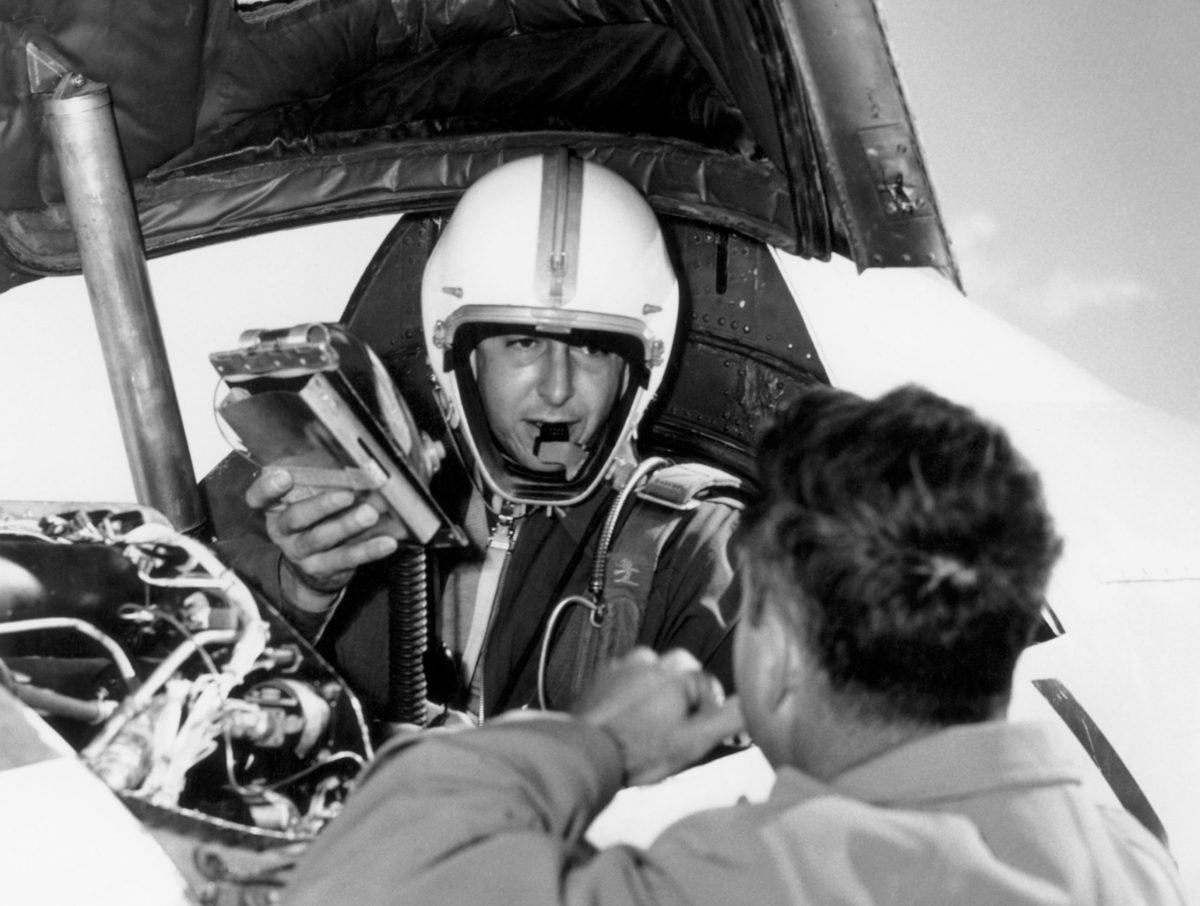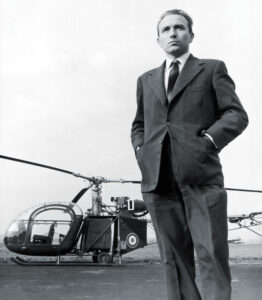While many laypeople know that Chuck Yeager was the first pilot to exceed Mach 1 in level flight, far fewer can recall the name of the first man to fly an airplane at twice the speed of sound. That man, Scott Crossfield, had what was undoubtedly one of the most impressive and remarkable careers of any pilot in the 20th century.
Born Albert Scott Crossfield on October 2, 1921, he was raised on a farm in Washington state. By his own assessment a middle-of-the-pack student, Crossfield was nonetheless intensely interested in the goings-on at nearby Chehalis Municipal Airfield, which he described in his autobiography as “a cow pasture adorned with two skeletal airplane hangars.” While still a teenager, Crossfield began to pay for flying lessons at Chehalis when he could afford it. After he had accumulated just seven or eight hours of flight time, the pilots at Chehalis encouraged him to solo and, eager for the experience, he took them up on their offer.
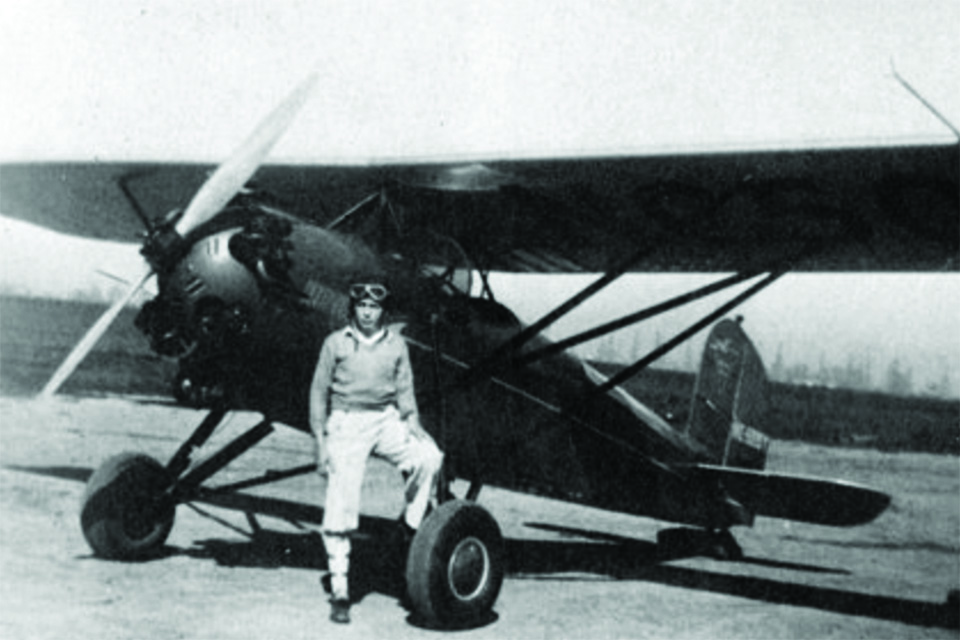
Crossfield soon taxied a battered Curtiss Robin high-wing monoplane across the grass and took to the skies. He flew some lazy eights and then got down to business, intentionally putting the Robin into a spin. Before recovering, he heard a loud banging noise that resolved when he returned to level flight. Subsequent spins brought back the same banging noise. On the third go-around he noticed that the rear door of the plane was open, causing the noise. Upon landing he realized that the other pilots knew this would happen and were having a good laugh at his expense. Still, he had completed his first solo, though he kept the flight a secret from his parents at the time.
While studying at the University of Washington, Crossfield took formal pilot training through the government-subsidized Civilian Pilot Training Program. After a stint working for Boeing, he joined the Navy during World War II and underwent additional flight training at Naval Air Station Corpus Christi, Texas. There he felt his prior training, which had emphasized individualism over working as part of a team, was a hindrance. Despite literally begging the Navy for a fighter pilot slot, Crossfield was assigned to fly two-man dive bombers—a job he found galling. Spending most of the war as an instructor, he never saw combat despite his repeated attempts to get into the action.
After the war, and upon completing his undergraduate and master’s degrees, Crossfield joined the National Advisory Committee for Aeronautics (NACA, the forerunner to NASA) and was assigned to the High-Speed Flight Station at Edwards Air Force Base in California. Crossfield’s test-piloting work there lasted for several years from the late 1940s through the mid-1950s. He flew a variety of dangerous experimental aircraft, including the famed Bell X-1, Northrop X-4, Bell X-5 and Douglas D-558-1 Skystreak. His most famous flight was in the D-558-2 Skyrocket, a turbojet- and/or rocket-powered variant that, like the X-1, was carried aloft underneath a modified B-29 Superfortress (in this case a Navy P2B). Douglas built three Skyrockets, which together made a total of 313 flights, mostly to study the operational characteristics of sweptwing aircraft at transonic and supersonic speeds.
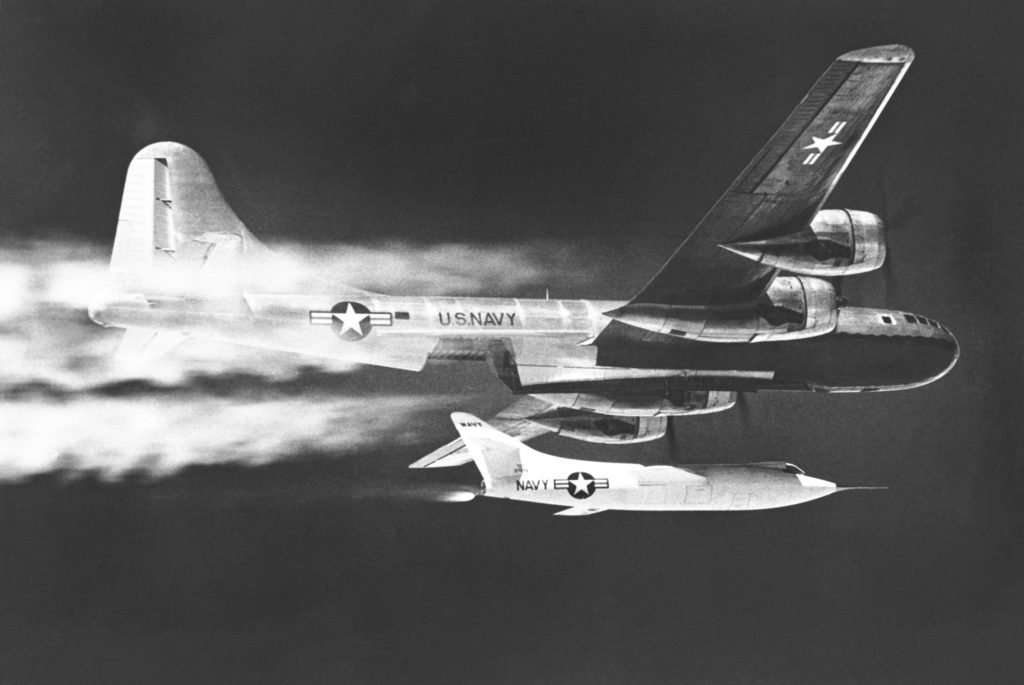
On November 20, 1953, shortly before the 50th anniversary of the Wright brothers’ first flight, Crossfield was at the controls of a waxed and over-fueled D-558-2 whose exhaust nozzles had been extended to improve rudder response. The day was cold and blustery, which was felt to be advantageous given the heat and friction that high-speed flights generated across the Skyrocket’s airframe.

this article first appeared in AVIATION HISTORY magazine
Facebook @AviationHistory | Twitter @AviationHistMag
After being dropped by the P2B at 32,000 feet, Crossfield lit the engines and ascended to 72,000 feet before entering a shallow dive. The Skyrocket became more and more efficient as it accelerated, burned off fuel and lost weight. The extra fuel paid off: Just before the tanks ran dry Crossfield punched through Mach 2, achieving a then world record speed of Mach 2.005. It was the only time a Skyrocket ever flew faster than Mach 2 and it was widely heralded in the press of the day.
Leaving NACA in 1955, Crossfield became the chief engineering test pilot for North American Aviation. There he played a fundamental role in the design and construction of the X-15 rocketplane. Crossfield himself made the very first unpowered flight in the X-15 as well as its first powered flight. He completed a total of 14 X-15 flights (including one in 1959 that ended in a landing so hard the aircraft broke in half), reaching a top speed of Mach 2.97 and a peak altitude of 88,000 feet.
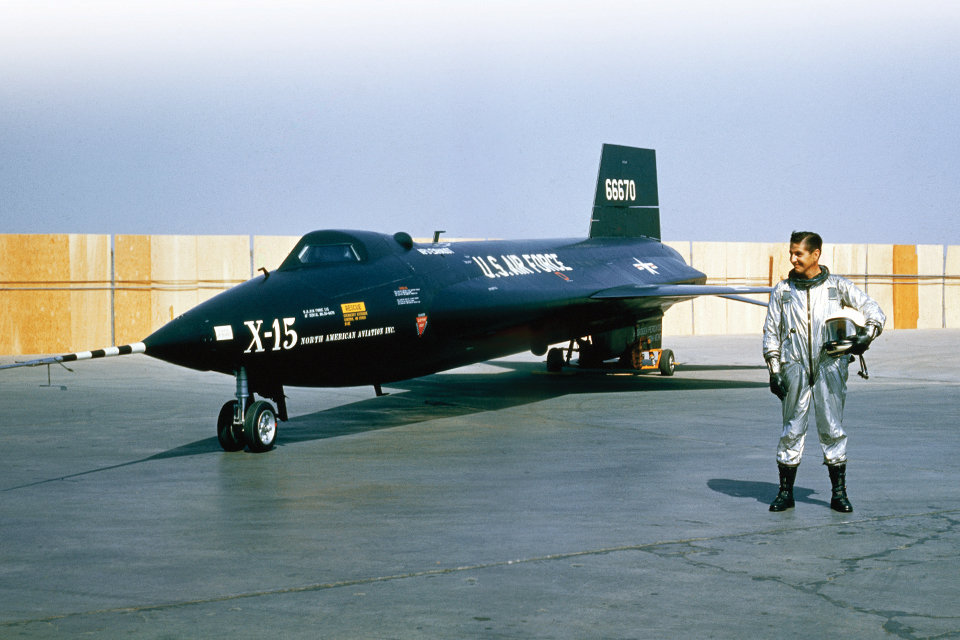
After leaving North American, Crossfield held a variety of jobs in the civil aviation world. On April 19, 2006, the famed test pilot, then 84, was flying his Cessna 210A from Prattville, Ala., to Manassas, Va. He was very familiar with the single-engine, retractable-gear aircraft, but he never arrived at his destination. Wreckage of the plane, along with Crossfield’s body, was found in mountainous terrain near Ludville, Ga.; analysis indicated it had broken up in flight. The National Transportation Safety Board concluded that Crossfield and the air traffic controllers were both responsible for the crash, as he had proceeded into severe weather he could have avoided and was not adequately routed around it. The irony of Crossfield perishing in a slow-moving Cessna was lost on few at the time of his death.
Although dramatically portrayed in Tom Wolfe’s 1979 book The Right Stuff and the 1983 film based on it, Crossfield himself was always matter-of-fact about his flying, even to the point of rarely discussing it with his family. Of test pilots, he famously said, “It is a profession just like anything else….In my mind, we should divest ourselves of this idea of special people [being] heroes, if you please, because really they do not exist.”
This article appeared in the July 2021 issue of Aviation History. Subscribe today!

